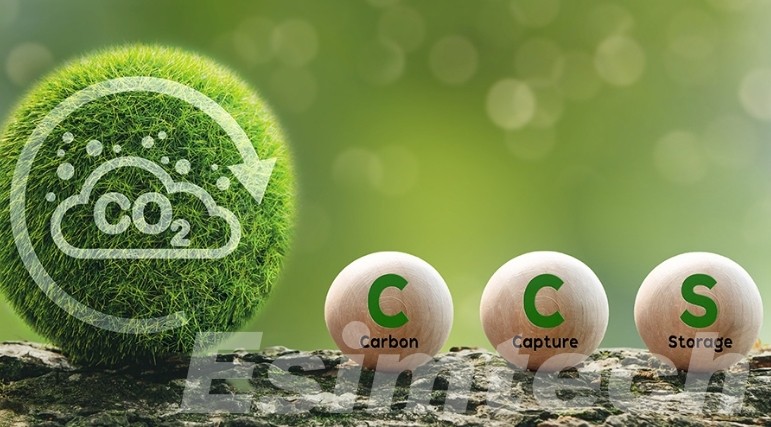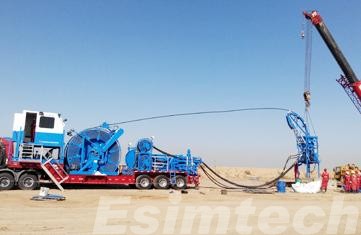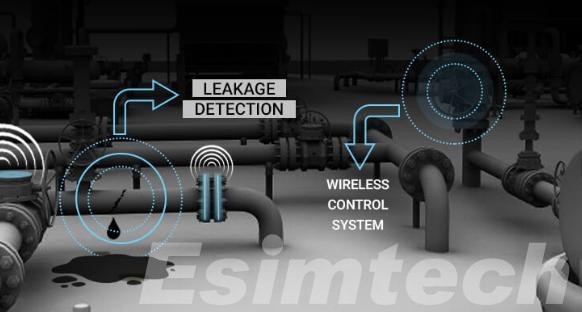The Role of Downhole Equipment in Carbon Capture and Storage
As the global community grapples with the escalating challenge of climate change, Carbon Capture and Storage (CCS) has emerged as a pivotal technology to mitigate greenhouse gas emissions. CCS involves capturing carbon dioxide (CO₂) emissions from industrial sources and storing them underground to prevent their release into the atmosphere. A critical component of this technology is the downhole equipment used in the injection and storage phases of CCS. This article explores the essential role of downhole equipment in CCS, its various types, and the emerging technologies and innovations in this field.
What is Carbon Capture and Storage

Carbon Capture and Storage (CCS) is a technological process designed to mitigate climate change by capturing carbon dioxide (CO2) emissions from large industrial point sources, transporting it to a storage site, and depositing it deep underground. The process involves three primary stages:
- Capture: CO2 is separated from other gases emitted by industrial facilities, such as power plants, cement factories, and steel mills. This is typically achieved through chemical processes that absorb the CO2. The captured CO2 is then compressed into a liquid state for efficient transportation.
- Transport: The compressed CO2 is transported to a suitable storage location. This is often done through pipelines, but ships or trucks can also be used for shorter distances.
- Storage: The CO2 is injected deep underground into secure geological formations, such as depleted oil and gas reservoirs, saline aquifers, or unmineable coal seams. These formations are carefully selected based on their ability to safely and permanently store the CO2. Once injected, the CO2 is trapped within the porous rock formations, preventing its release into the atmosphere.
By preventing CO2 from reaching the atmosphere, CCS offers a potential solution to reduce greenhouse gas emissions and contribute to climate change mitigation efforts. However, it is essential to note that CCS is not a standalone solution but should be part of a broader strategy that includes energy efficiency, renewable energy sources, and other emissions reduction measures.
Types of Downhole Equipment in CCS

Downhole equipment is essential in Carbon Capture and Storage (CCS) operations, particularly during the injection and storage phases. This equipment ensures the safe and efficient delivery of CO₂ into deep geological formations and its secure containment over long periods. The main types of downhole equipment used in CCS include injection wells, wellheads, tubing and casing, packers and seals, and monitoring equipment. Each type plays a critical role in the overall success of CCS projects.
Injection Wells
Injection wells are the primary conduits through which CO₂ is transported from the surface to the underground storage formations. These wells must be designed and constructed to handle high pressures and the corrosive nature of CO₂. Key considerations for injection wells include:
- Well Design: Injection wells are typically drilled to depths of several thousand feet, reaching the target geological formation. The design of these wells must account for various factors, including the pressure and temperature conditions of the storage site, the type of formation, and the expected volume of CO₂ to be injected.
- Materials: High-strength steel and corrosion-resistant alloys are commonly used in the construction of injection wells to withstand the harsh subsurface environment and prevent degradation over time.
Wellheads
Wellheads are critical components installed at the surface of injection wells. They serve as the interface between the surface infrastructure and the downhole equipment, controlling the flow of CO₂ into the well. Wellheads must be robust and capable of withstanding high pressures. Key features include:
- Valves and Chokes: These components regulate the injection rate and pressure of CO₂ entering the well. They are designed to provide precise control over the injection process, ensuring that the CO₂ is delivered at the optimal rate and pressure for the specific geological formation.
- Safety Systems: Wellheads are equipped with safety devices, such as blowout preventers, to protect against uncontrolled releases of CO₂ and ensure safe operation.
Tubing and Casing

Tubing and casing are essential for maintaining the structural integrity of the wellbore and providing a secure pathway for CO₂ injection. They are typically made from high-grade steel and are designed to resist the corrosive effects of CO₂ and other subsurface conditions. Key aspects include:
- Casing: Casing is installed in the wellbore to stabilize the well and prevent the walls from collapsing. It also serves as a barrier to protect groundwater and other subsurface resources from contamination by CO₂.
- Tubing: Tubing runs inside the casing and provides a conduit for CO₂ to be injected into the storage formation. Tubing is designed to handle high pressures and temperatures, and it must be resistant to corrosion and erosion caused by CO₂.
Packers and Seals
Packers and seals are critical devices used to isolate different sections of the wellbore, ensuring that CO₂ is directed precisely into the target storage formation and preventing it from migrating into unintended zones. These components play a vital role in maintaining the integrity of the injection process. Key features include:
- Mechanical Packers: These are expandable devices that create a seal between the tubing and the casing or wellbore. They are activated mechanically or hydraulically to provide a tight seal and prevent the movement of CO₂.
- Inflatable Packers: These packers use inflatable elements to create a seal. They are often used in applications where a higher degree of flexibility and adaptability is required.
Monitoring Equipment
Monitoring equipment is essential for tracking the injection process and ensuring the safe and efficient operation of CCS projects. This equipment provides real-time data on various parameters, allowing operators to make informed decisions and respond to any issues promptly. Key types of monitoring equipment include:
- Pressure and Temperature Sensors: These sensors measure the pressure and temperature of CO₂ at various points in the wellbore, providing critical data for managing the injection process and ensuring the integrity of the storage formation.
- Flow Meters: Flow meters measure the rate of CO₂ injection, helping operators maintain the desired injection rate and avoid over-pressurizing the formation.
- Leak Detection Systems: Advanced monitoring systems are used to detect any potential leaks of CO₂ from the wellbore or storage formation. These systems use a variety of techniques, including gas detection sensors, acoustic monitoring, and satellite-based monitoring, to provide early warning of any issues.

- Geophysical Monitoring Tools: Seismic surveys, microseismic monitoring, and other geophysical tools are used to monitor the behavior of CO₂ in the storage formation, ensuring that it remains securely trapped and does not migrate out of the intended storage zone.
Specialized Equipment for Enhanced Oil Recovery (EOR)
In some CCS projects, CO₂ is injected into depleted oil fields to enhance oil recovery (EOR). This process involves additional specialized equipment:
- EOR-specific Injectors: These injectors are designed to handle the specific requirements of CO₂ EOR, including the need to inject CO₂ at varying pressures and rates to maximize oil recovery.
- Production Wells: Alongside injection wells, production wells are used to extract the additional oil mobilized by the injected CO₂. These wells must be equipped with appropriate lifting and separation equipment to handle the produced fluids.
Role of Downhole Equipment in the Injection Phase
Downhole equipment serves as the critical interface between the surface and the subsurface in the CCS process. During the injection phase, this equipment plays a multifaceted role:
- Precise Injection Control: Downhole equipment is instrumental in regulating the rate and pressure of CO2 injection into the subsurface formation. This control is essential to prevent premature breakthrough, optimize injection efficiency, and ensure safe operations. Packers, in particular, are crucial for isolating different reservoir zones and directing CO2 to the target formation.
- Wellbore Integrity Maintenance: The subsurface environment is harsh, with high pressures and corrosive fluids. Downhole equipment, such as casing and cement, forms a protective barrier to prevent CO2 leakage and maintain the structural integrity of the wellbore. This is vital to safeguard against potential contamination of groundwater or the atmosphere.
- Real-time Monitoring and Data Acquisition: Equipped with sensors and monitoring instruments, downhole equipment provides invaluable data on pressure, temperature, and flow rates within the wellbore and reservoir. This information is essential for optimizing injection parameters, detecting anomalies, and ensuring the safe and efficient operation of the CCS project.
- Reservoir Management Support: By gathering detailed data on reservoir conditions, downhole equipment contributes to reservoir characterization and monitoring. This information is crucial for understanding the storage capacity of the formation, predicting CO2 migration, and assessing the long-term security of the stored carbon.
- Risk Mitigation: Downhole equipment plays a vital role in mitigating potential risks associated with CO2 injection. By providing early warning signs of issues such as equipment failure, leaks, or changes in reservoir conditions, it enables timely interventions to prevent more significant problems.
Through these functions, downhole equipment is indispensable in ensuring the safe, efficient, and reliable operation of CCS projects.
Summary
Downhole equipment is an indispensable component of CCS projects. Its role in ensuring wellbore integrity, controlling injection, monitoring reservoir performance, and optimizing operations is critical for the successful and safe storage of CO2. As technology continues to evolve, the development of advanced downhole equipment will be instrumental in expanding the deployment of CCS and mitigating climate change.
